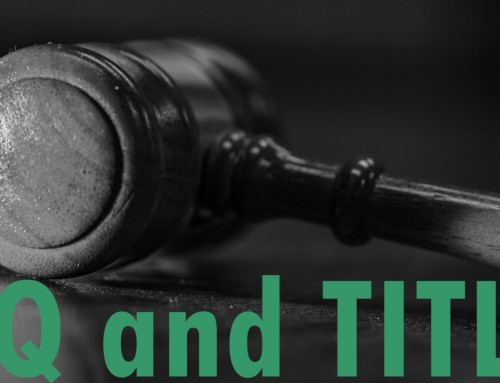Watch Your Language!
Testator’s Intent Governs Construction of Ambiguous Will Provisions
People tend to hate when others put words in their mouths! For this reason (along with many other valid legal reasons established by common law), courts look to the clear meaning of language contained in a will if the language is otherwise unambiguous. Unfortunately, conveyance language in wills is not always clear, meaning courts must look to its rules of construction to determine the meaning behind such ambiguous language.
When deciphering the meaning of any provision in a will, the overarching rule of construction, ambiguous language or not, is that the court must ascertain the testator’s (the deceased writer of the will) intent. This means reaching the same conclusion that a layperson would when reading the testator’s ambiguous language. When going through this construction exercise, the Supreme Court of Texas has made it clear that ambiguous language must be reviewed in its entire context rather than in isolation without context from the language in the remainder of the will to discern the intent.
It is crucial that the language in a will is clear on its face, as the stakes are extremely high given the testator is permanently unavailable for clarification of his or her intent. Ambiguous language in a will could result in a conveyance that runs afoul of the testator’s original intent if the court fails to make the right interpretation, which will complicate the probate process and put a will’s beneficiaries through difficulty that the will was originally intended to eliminate.
While much of the law on will construction is settled, it is sometimes difficult for courts at all levels to reach the same conclusion. A prime example from a recent court case comes from Knopf v. Gray, 545 S.W.3d 542 (Tex. 2018) (“Knopf”). In Knopf, a testator’s will contained the following conveyance language:
NOW BOBBY I leave the rest to you, everything, certificates of deposit, land, cattle and machinery, Understand the land is not to be sold but passed on down to your children, ANNETTE KNOPF, ALLISON KILWAY, AND STANLEY GRAY. TAKE CARE OF IT AND TRY TO BE HAPPY.
Shortly after the testator’s death, the land in question was conveyed to Bobby, which Bobby later sold. Knopf, along with the other “children,” contested Bobby’s transfer of the land, arguing that Bobby only owned a life estate (an interest in the land lasting for the lifetime of the grantee before automatically conveying to a named remainderman upon the grantee’s death) in the land by virtue of the conveyance language above. In the event the conveyance was deemed a life estate, Bobby would be limited to conveying nothing more than a life estate in the land. Due to the ambiguity of the conveyance language, the Texas Supreme Court was forced to determine whether it was the testator’s intent to convey a life estate or an estate in fee simple, and the court held the conveyance was a life estate.
When it comes to conveyance language in a will, clarity of the testator’s intent is key to avoid a lengthy probate process or lawsuit like Knopf. Moreover, it is the only way to ensure a court does not put words in your mouth!
Prepared by the offices of Richard Abernathy, this article should not be construed as legal advice related to any specific facts or circumstances. Although this article covers legal subjects, it is intended to educate readers and not to provide advice that will be the basis for action or inaction in any specific circumstance. Viewing these materials does not create an attorney-client relationship between Abernathy, Roeder, Boyd & Hullett, P.C. and the reader or the reader’s institution. For circumstance-specific legal advice, please directly contact a licensed attorney.







Leave A Comment